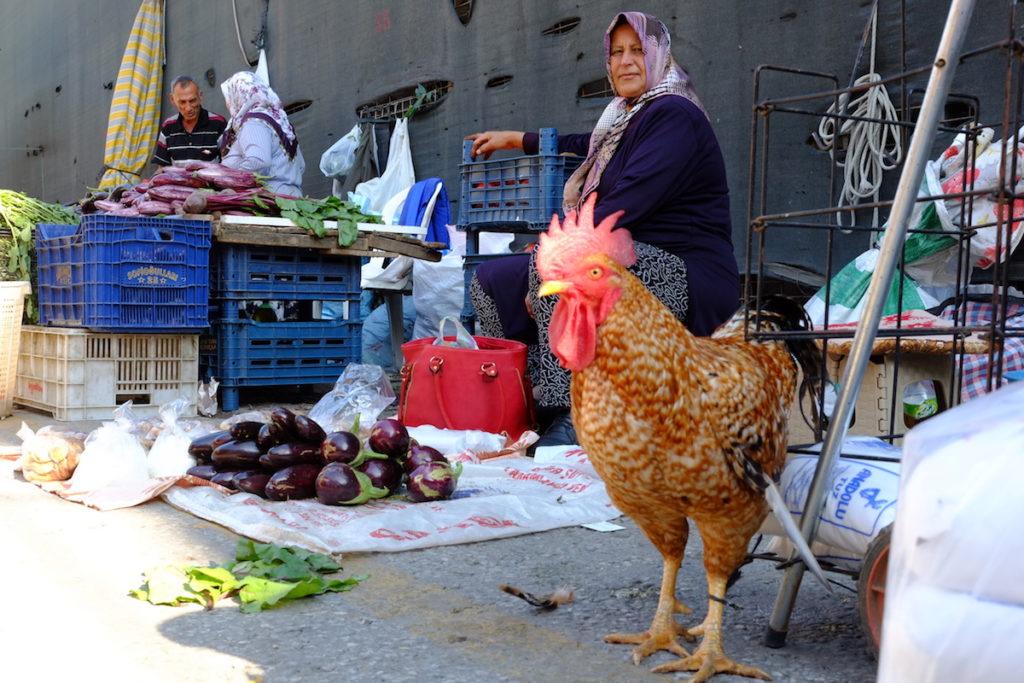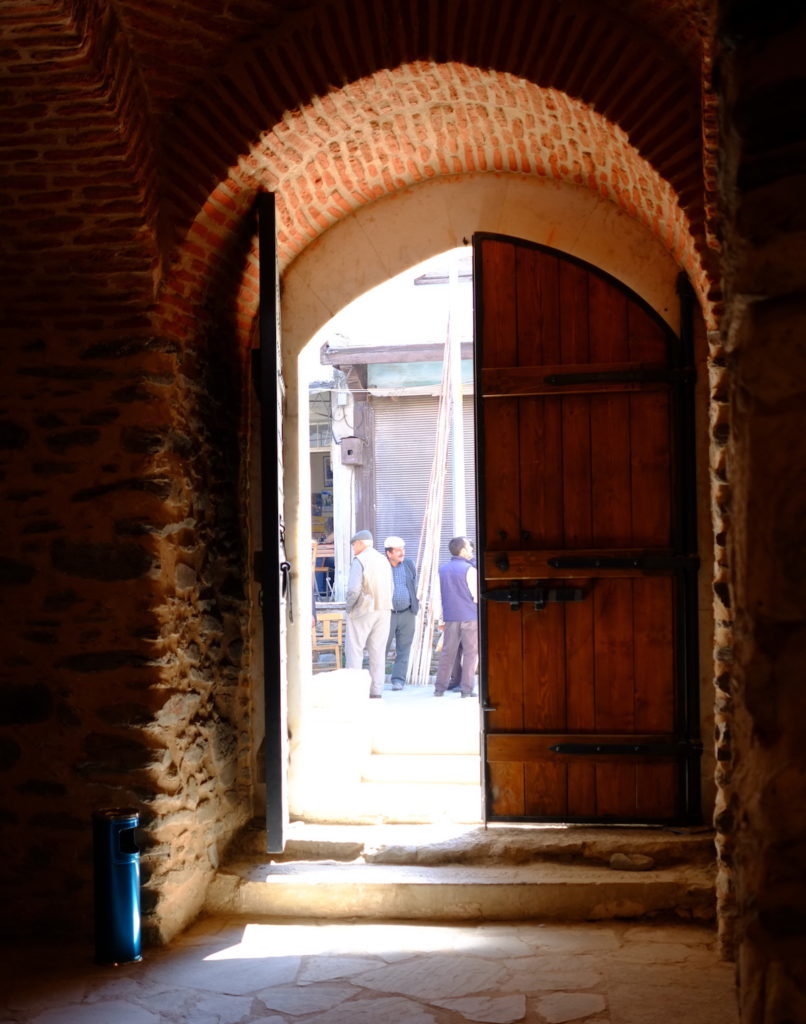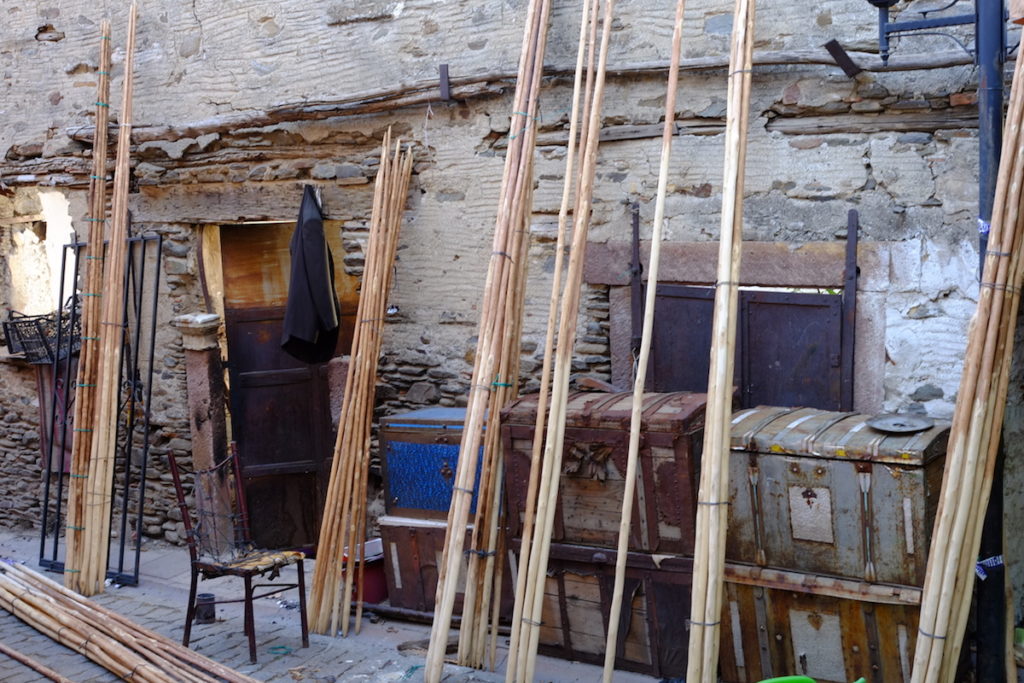Being a connoisseur of Turkish open-air markets, I couldn’t wait to visit the one that claims to be the country’s largest: the Salı Pazarı in Tire, which takes over nearly half of this small city every Tuesday. Since I was going just to see the market, I gave myself an afternoon in Tire, which turned out to be a mistake. I found out that this historic city is filled with hidden gems, which take at least a couple days to savor.
Tire is an hour’s drive southeast of Izmir, but I didn’t take a car. Instead, I took the late-morning train from Basmane. Nestled in a comfortable seat, I saw farmland and small hamlets roll by until we arrived in the center of Tire shortly before noon. Finding the market was easy: pretty much everyone on the train was headed there. Once my fellow passengers and I crossed Cumhuriyet Meydanı, I spotted the first few market stalls. Walking up Atatürk Caddesi, I saw a few more. Another few blocks, and I started believing the town’s claim of holding the nation’s biggest weekly pazar. Every avenue, every side street, every tiny alley, in every direction, was crammed with tables and tarps. Hours later, it was time to catch the afternoon train back to Izmir, and I still hadn’t seen the whole market!

Part of the reason I ran out of time was that I wasn’t going to leave Tire without eating at the Kaplan Dağ restaurant on a hilltop a few kilometers outside of town. I’m glad I went: the place is cozy, rustic and eclectically decorated. The mezes are lovely and I hear this is the best place to eat the famous Tire köfte. Vegetarians can eat their way across an extensive appetizer buffet and for pescatarians there’s fish on the menu, too.
During the taxi ride to the restaurant I started realizing my scheduling error. The cab driver pointed out several landmarks, all of which made me want to shout “Dur!” and jump out of the cab. Chief among them was Dere Kahve, a city-run café by a creek in a wooded ravine at the edge of Tire. The driver explained that the ravine also holds a very old mosque and some ruins. The café sits in a charming neighborhood of stone houses, at least one of which has been converted into a boutique hotel.

History is layered deep in Tire, one of the oldest settlements in western Anatolia. Just walking around the market, I noticed a mosque built in the early 1400s, a restored Ottoman-era bazaar and a historic hamam that’s still open for business. Reading up on the city’s history later, I found out that there are Greek and Roman ruins, as well as a restored Ottoman library from the early 1800s, which holds thousands of original manuscripts from that era.
I noticed many artisan shops in the narrow alleys of the old Greek neighborhood near Atatürk Caddesi. Several shops featured handmade leather goods, including saddles. Other artisans made wool products by felting the material, a process one source claims originated in Tire. I saw felted toys, jackets and slippers in shop windows. Speaking of slippers, I also saw a grey-haired man making wooden slippers, or clogs, richly adorned with silver and colorful stitching. Back home I recognized him in a picture as Cemil Tolga, the city’s last master of a tradition that goes back centuries. There were also tinsmiths and cabinetmakers practicing their crafts. Some of them were just hidden by the many, many vendors selling vegetables or t-shirts.

Basically, the biggest market in Turkey obstructed my view of what might be one of the most diverse artisan centers in Turkey, in a beautiful, historic setting to boot. Don’t get me wrong: the market’s great, too. It has more vendors than any I’ve seen, and its richness of color, smell and sound is overwhelming, in a good way. You can buy any fruit, vegetable, spice, or household item. You can pull up a chair at one of the many tea houses and watch the market-goers. You can get lost for hours and never leave the jumble of booths and shouting mongers. It’s lovely. But next time, I’m giving myself a weekend to wander Tire’s cobblestone alleys and streets unencumbered by crowds and stalls. When all of this city’s gems are laid bare. When I can explore the deeper layers in this city that has been stacking them for millennia.
If you want to visit Tire, the Tire market happens every Tuesday in the neighborhoods left and right of Atatürk Caddesi, south of Adnan Menderes Bulvarı. There are four trains per day in either direction from/to Basmane, stopping by Gaziemir. Train tickets are 8.50 TL each way. Driving there takes a little more than one hour, via the E87 and D310 highways. You can find information on the many historic sites in Tire on the city’s website. As for eating, many restaurants in town offer Tire Köfte. The most famous edition can be found at Kaplan Dağ Restoran in the village of Kaplan, a short drive south of Tire. Any taxi driver will know the place and the ride costs approximately 35 TL each way. If you prefer to spend the night in town, there are a number of hotels, but “Gülcüoğlu Konakları” is where I plan on staying next time. It is in a converted historic house near many of the sights. Address: Kurtuluş Mahallesi, Türkocağı Cad. No:56, 35900 Tire/İzmir
Have you ever visited Tire? Let us know your experiences in the comments.
All images courtesy of the author.












